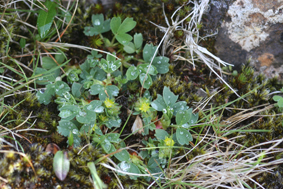Neige et plantes, une belle complicité dans les Hautes-Vosges
 Résumé ̶ À l’heure où la neige et la glace diminuent fortement sur l’ensemble de la planète, il nous paraît important de nous ouvrir aux changements qui s’opèrent sur la végétation des Vosges. La neige forme une protection très importante pour les plantes, particulièrement en montagne. Le présent travail souhaite éclairer les différentes interactions qui s’opèrent au sein de la végétation en période hivernale. Ce travail souligne également l’importance des bryophytes dans la reconquête végétale des loupes de solifluxion ainsi que la protection que la neige opère sur les végétaux. Les zones à avalanches actives des Vosges représentent le refuge de plantes relictuelles post-glaciaires et arcto-alpines principalement dans les massifs entre le Frankenthal et le Rothenbachkopf.
Résumé ̶ À l’heure où la neige et la glace diminuent fortement sur l’ensemble de la planète, il nous paraît important de nous ouvrir aux changements qui s’opèrent sur la végétation des Vosges. La neige forme une protection très importante pour les plantes, particulièrement en montagne. Le présent travail souhaite éclairer les différentes interactions qui s’opèrent au sein de la végétation en période hivernale. Ce travail souligne également l’importance des bryophytes dans la reconquête végétale des loupes de solifluxion ainsi que la protection que la neige opère sur les végétaux. Les zones à avalanches actives des Vosges représentent le refuge de plantes relictuelles post-glaciaires et arcto-alpines principalement dans les massifs entre le Frankenthal et le Rothenbachkopf.
Mots-clés ̶ adaptation hivernale, bryophytes, hautes altitudes de basse montagne, France, solifluxion.
Abstract ̶ Snow and plants, a beautiful complicity in the High Vosges
With the dramatic decrease of snow and ice around the world, it is important for us to pay attention to the changes within the vegetation in the Vosges. Snow provides a very important protection for plants, especially in the mountains. The present work aims to highlight the different interactions that take place within the vegetation during the winter period. This work also underlines the importance of bryophytes in the re-conquest of solifluction beads as well as protection against the extreme cold that snow provides to plants. The active avalanche zones of the Vosges also offer favourable conditions for postglacial relict arcto-alpine plants, such as in the area between the Frankenthal and the Rothenbachkopf.
Keywords ̶ winter adaptation, bryophytes, high elevation of low mountains, France, solifluction.
